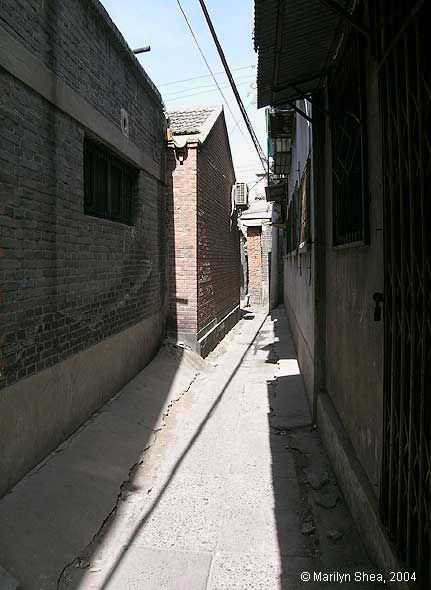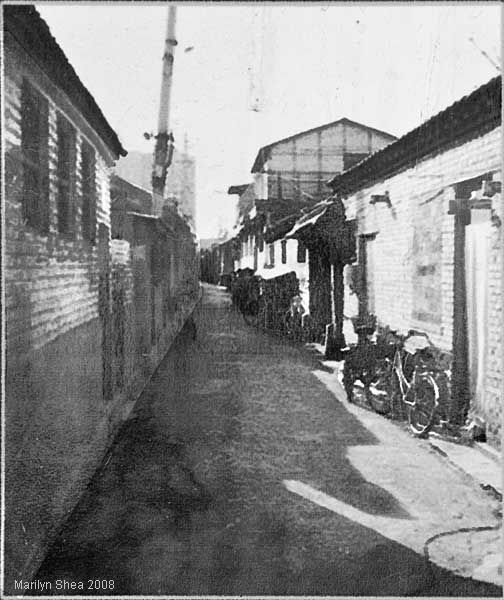 |
| Qianmen Hutong 前门胡同 (Qiánmén hútòng) is actually a misnomer due to the tendency of both Beijingers and visitors to refer to the entire area south of Tian'anmen Square as Qianmen.
Qianmen means "front gate" in Chinese. As such the name is correct as a reference, but the name of the "gate" to the Inner City is Zhengyangmen and it is fronted by an outer defensive gate called the "Archery" or "Arrow" Gate, depending on how you translate the Chinese. I am going to stick with Archery Gate. The hutong is actually several hutongs. On the east side of Qianmen Dong Lu and Qianment Dajie, the hutongs include the Cao Chang Hutong, Dajiang Hutong and the Xiaojiang Hutong, and Damochang Hutong 打磨厂胡同 which is the focus of the pictures in this series. The most famous hutong is on the west side of Qianmen Dajie and is called Langfangsitiao or more commonly Dashila or Dazhalan to give it its modern spelling. There's an interesting story that goes with that. The hutongs were built during the Ming Dynasty as service workers for the palace developed businesses and residences in the area. They were the craftsmen who made the items needed for the Emperor and the court. The area developed into a rich shopping area as craftsmen opened stores to offer their wares to the public, particularly around the commercial areas of what is now called Qianmen Dajie and Dashila Jie. The wealth soon attracted burglars and thieves, so the Emperor had a huge long wooden fence built to surround the hutong and shopping streets. In Chinese, Dashila means "big wooden fence". The name gradually stuck and you only find references to Langfangsitiao on old maps. |
 |
http://hua.umf.maine.edu/China/HistoricBeijing/Qianmen/index.html
Last
update: August 2009
© Marilyn Shea, 2009